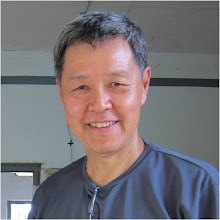 For the longest time we all worked on the premise that drug molecules moved across the cell membranes passively, and by virtue of their lipophilicity. In technical terms, this was determined by the water:octanol partition coefficient. But increasingly we are seeing that this is not all there is to the story. It would seem that few drug molecules actually traverse the lipid bilayer by passive diffusion. Few would cross the membrane without engaging the transport process in some way or other.
For the longest time we all worked on the premise that drug molecules moved across the cell membranes passively, and by virtue of their lipophilicity. In technical terms, this was determined by the water:octanol partition coefficient. But increasingly we are seeing that this is not all there is to the story. It would seem that few drug molecules actually traverse the lipid bilayer by passive diffusion. Few would cross the membrane without engaging the transport process in some way or other. One important and very fundamental part of this process is mediated by a superfamily of drug transporters called the ABC transporters. The 'ABC' stands for ATP-Binding Cassette. Apart from having at least one ATP-binding domain, these transporters are characterized by a signature sequence of amino acid residues within the nucleotide binding domain - an LSGGQ motif.
In contrast to prokaryotes, the ABC transporters function as efflux pumps, which together with the detoxification enzymes constitute a complex integrated 'chemo-immunological defense' system against drugs and other xenobiotics.
 In human beings, this superfamily of transporters comprises 48 members grouped into 7 families. Just how fundamental these transporters is evidenced by the ubiquity in all living systems be they eukaryotes or prokaryotes. Even mitochondria carry at least 4 of their own ABC transporters.
In human beings, this superfamily of transporters comprises 48 members grouped into 7 families. Just how fundamental these transporters is evidenced by the ubiquity in all living systems be they eukaryotes or prokaryotes. Even mitochondria carry at least 4 of their own ABC transporters.Prokaryotes
Agrobacterium tumefaciens - 135
Fungi/yeast
Saccharomyces cerevisiae - 22
Plasmodium - 15
Mitochondria - 4
Human - 48
The ABC transporters and their SLC (solute carrier) counterparts are fast shaping up to be probably the most important determinants of interindividual differences in drug efficacy/toxicity.








No comments:
Post a Comment